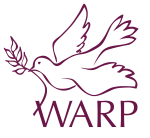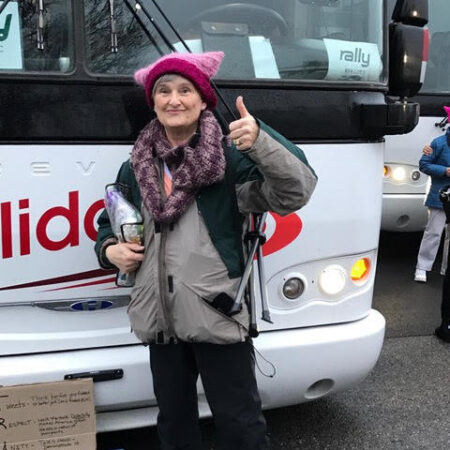by Judi Jetson
In January WARP’s online program featured exhibits of the Migrant Quilt and COVID Quilt projects at museums of the Arizona Historical Society. We gathered to watch the Zoom program – which you can see on our YouTube channel here – from throughout the US and several other countries. I couldn’t help but think of other times fiber artists have come together to make their voices heard.
Pussy Hat Project
The most poignant for me was the Pussy Hat project, which brought thousands of artists, knitters, crocheters, weavers and activists together at marches in Washington, DC as well as in hundreds of smaller cities and towns across the United States. Making those pink pussy hats helped us feel we could do something constructive to express our sense of being pro-women rather than anti-anything. I think that we’ve seen that as well with the #MeToo movement and Time’s Up really coming together. I knit at least 2 dozen of those hot pink hats, and sent them off to friends and relatives – who wore them with pride. Even my husband wore one!
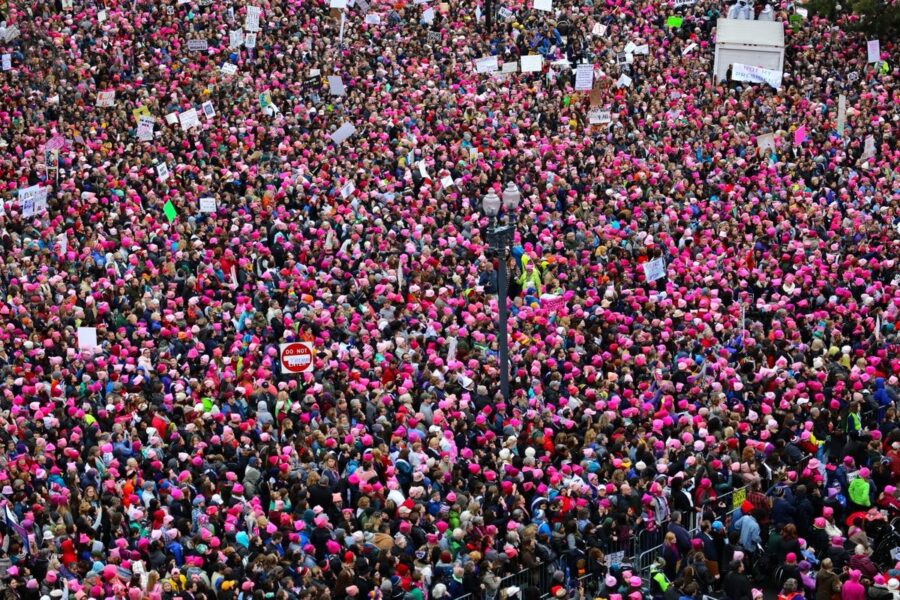
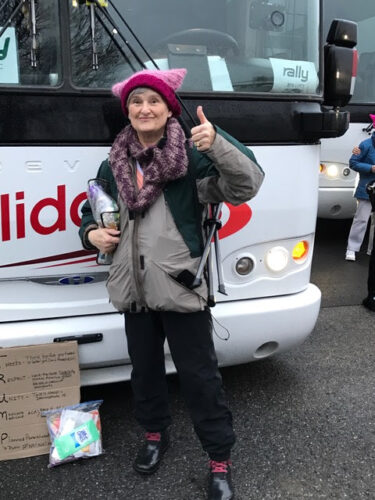
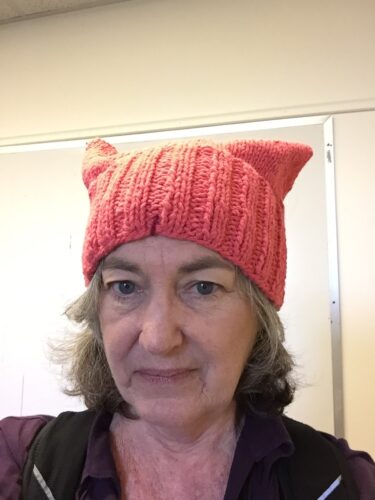
Welcome Blanket
Who was part of the Welcome Blanket project, which had thousands of us knitting blankets to make a 2,000-mile-long line of warm blankets to welcome our refugee and immigrant neighbors?
Here’s a link to an online gallery where you can see some of the blankets and notes that accompanied them. The organization that started this project continues, and I salute them for their commitment to a just immigration policy and welcoming our newest neighbors.
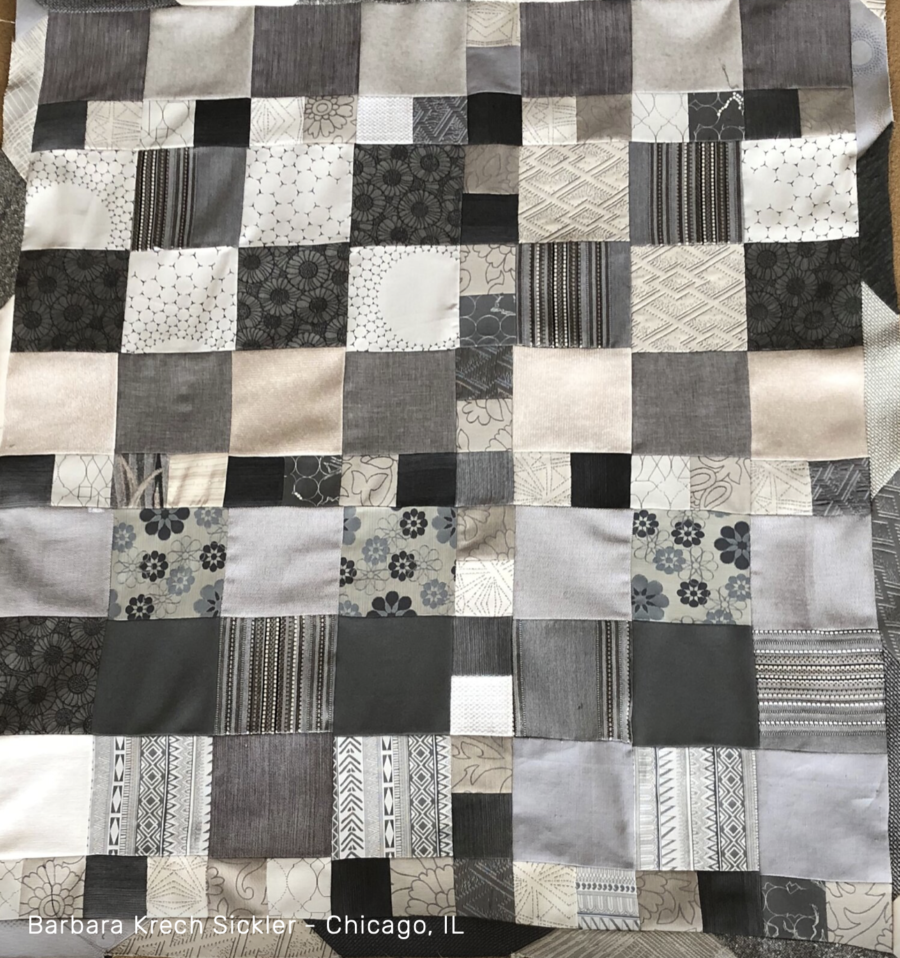
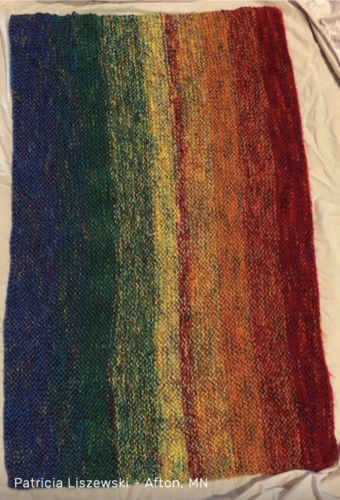
Taking part in Welcome Blanket is a tangible way to recognize and celebrate our global humanity and to uphold a foundational premise that immigration is vital for the continuing vibrancy of our society and growth of our nation. If you’d like to make a welcome blanket, the pattern and more information are on the website here.
Aids Memorial Quilt
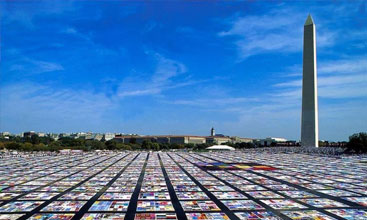
Another protest I’ll never forget was the AIDS Memorial Quilt project in 1981, an installation on the National Mall that documented the tens of thousands of people who had died from AIDs. It became impossible to ignore the size and scope of that pandemic when you saw those quilts stretched out below the Washington Monument. Thanks to a seventh grader, this was the inspiration for the COVID Quilt project that was part of the AHS panel discussion.
The Clothesline Project
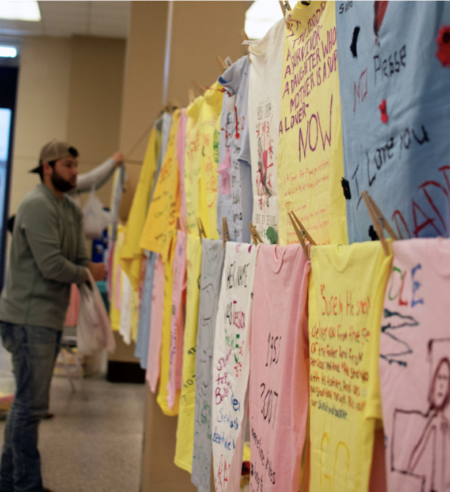
The Clothesline Project has been a far-reaching effort to bring attention to an important issue in society: “The first Clothesline Project originated in Hyannis, Massachusetts, in 1990 when a member of the Cape Cod’s Women’s Defense Agenda learned that during the same time 58,000 soldiers were killed in the Vietnam War, 51,000 U.S. women were killed by the men who claimed to love them.”
Since then, thousands of projects have been started in communities worldwide. The Tennessee Tech Women’s Center, for instance, has been involved since 1998 and has always welcomed participation from all people. They display their collection every April during Sexual Assault Awareness Month.
Tiny Pricks
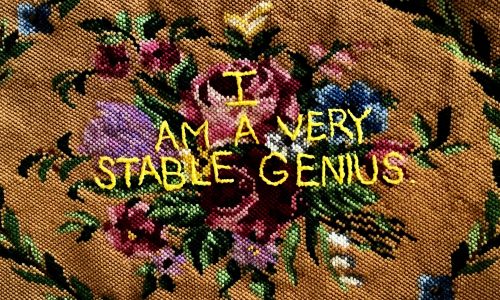
And who could resist the Tiny Pricks project posts on Instagram? These embroidery pieces, done with flowers and flourishes, were a wonderful, mostly humorous way originally to poke fun at the faux pas of President Trump, and now continuing to bring attention to issues like gun violence. I wish I’d been in one of the cities that had an exhibit of them.
Women of Color Quilters Network
In June the WARP panel discussion will be about activist quilt efforts of the Women of Color Quilters Network, who have been doing special exhibitions for almost 40 years. You can see a video of their show We Are the Story – A Visual Response to Racism hosted by the Textile Center of MN; it shows the pieces one by one and also has the makers speaking about what each one means.
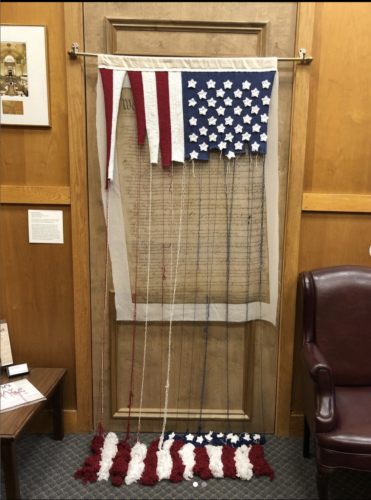
Even when only one of us brings attention to something wrong – like longtime WARP member Adrienne Sloan’s “The Unraveling” – we can make a difference with the work of our hands.
Bringing women together is a powerful way to attract the attention needed to make social change. These are just some of the stories that began in the US and are relatively recent. Textiles and protest have been linked forever worldwide, and will continue to be. What do you want to see changed, and how can the making of some kind of thread or cloth help?

Judi Jetson is a fiberactivist with a community developer’s heart. Judi’s grandmother taught her to knit at age 5, she did tie dye and batik in the 60s, learned to weave in the 80s and added lots more techniques to her fiber artist skill set ever since. She moved to Asheville in 2010 to work for HandMade in America, and helped found the nonprofit Local Cloth in 2012 which works to grow the fiber economy.
Ed. note: We want to thank the organizations and websites linked in this article for their vision and dedication, and for their descriptions and photographs used in this article.

Activismo Textil
Por Judi Jetson
En su programa de discusiones en línea de enero, WARP presentó exhibiciones de los proyectos Migrant Quilt y COVID Quilt en los museos de Arizona Historical Society. Nos reunimos para ver el programa Zoom, que usted puede ver en nuestro canal de YouTube aquí, en todo EE. UU. y varios otros países. Y no pude evitar pensar en otras ocasiones en que los artistas textiles se han unido para hacer oír su voz.
Pussy Hat Project
El más conmovedor para mí fue el Pussy Hat project, que reunió a miles de artistas, tejedoras, tejedoras de crochet, tejedoras de telar y activistas en marchas en Washington, DC, así como en cientos de ciudades y pueblos más pequeños de los Estados Unidos. Hacer esos sombreros rosados nos ayudó a sentir que podíamos hacer algo constructivo para expresar nuestro sentido de ser pro-mujeres en lugar de ser anti-todo. Creo que también lo hemos visto con toda la unión que sucedió con el movimiento #MeToo y Time’s Up.

Yo tejí al menos 2 docenas de esos gorros de color rosa intenso y se los envié a amigos y familiares, quienes los usaron con orgullo. ¡Hasta mi esposo usó uno!
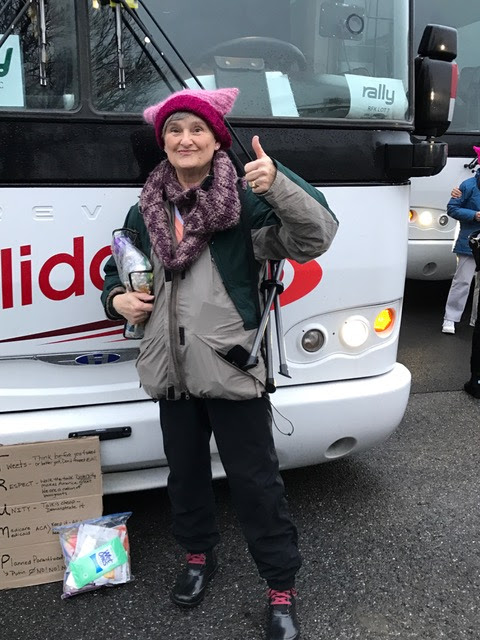
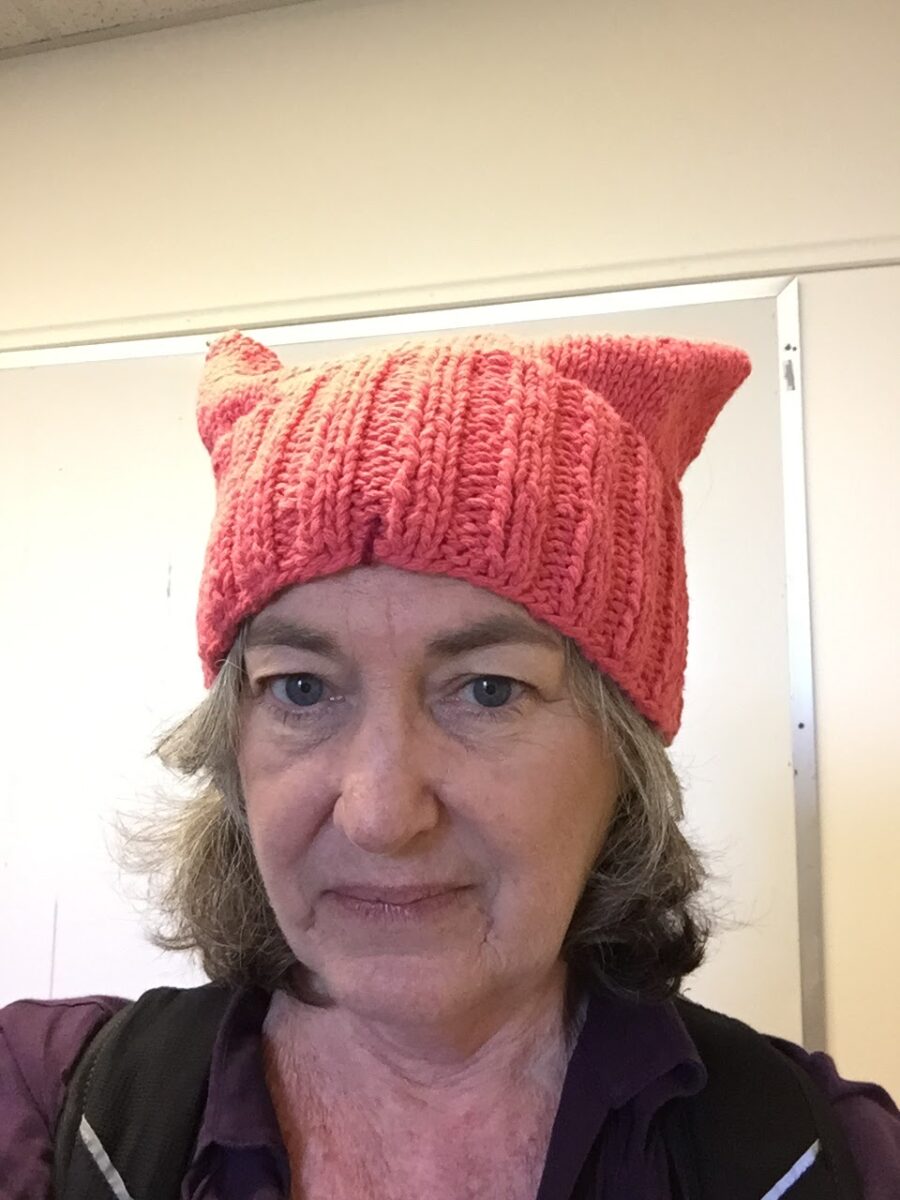
Welcome Blanket
¿Quién fue parte del proyecto Welcome Blanket, en el que miles de nosotros tejimos mantas para hacer una línea de 2,000 millas de largo de mantas cálidas, para dar la bienvenida a nuestros vecinos refugiados e inmigrantes?
Aquí hay un enlace a una galería en línea donde puedes ver algunas de las mantas y notas que las acompañaban. La organización que inició este proyecto continúa, y los felicito por su compromiso con una política de inmigración justa y por dar la bienvenida a nuestros vecinos más nuevos. Participar en Welcome Blanket es una forma tangible de reconocer y celebrar nuestra humanidad global y de defender la premisa fundamental de que la inmigración es vital para la vitalidad continua de nuestra sociedad y el crecimiento de nuestra nación. Si desea hacer una manta de bienvenida, el patrón y más información están en el sitio web aquí.
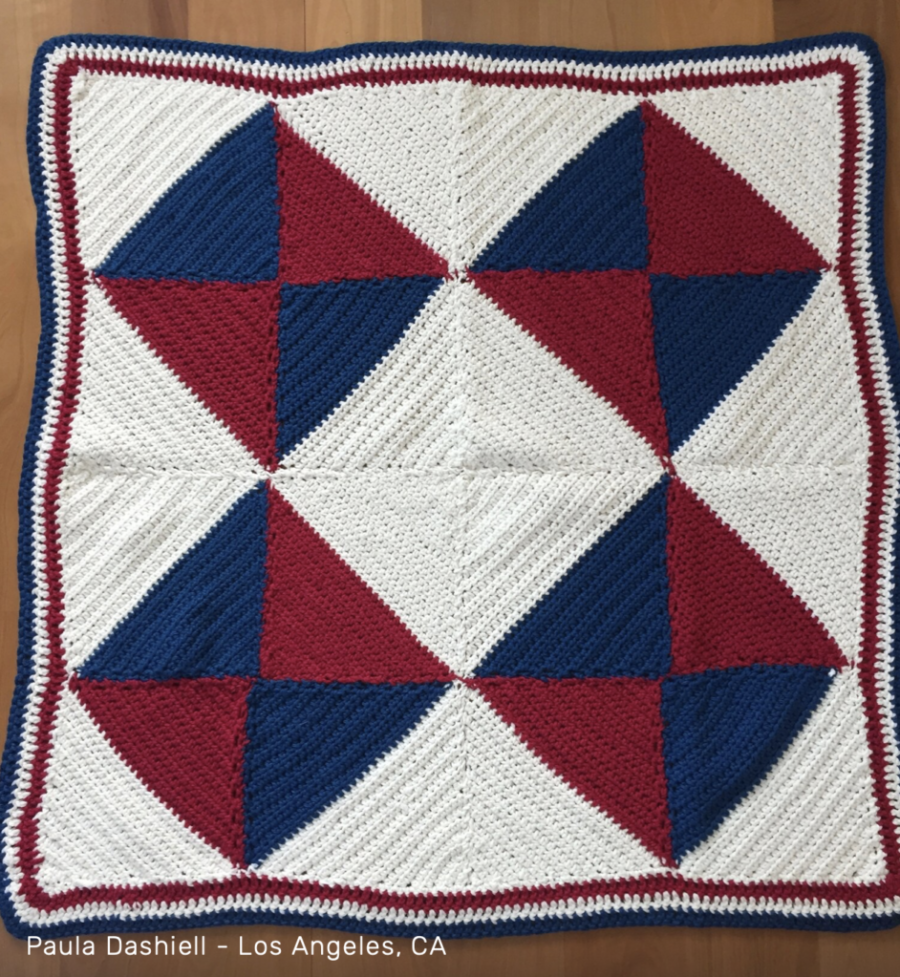

Aids Memorial Quilt

Otra protesta que nunca olvidaré fue el proyecto AIDS Memorial Quilt en 1981, una instalación en el National Mall que documentó las decenas de miles de personas que habían muerto a causa del SIDA. Se vuelve imposible ignorar el tamaño y el alcance de esa pandemia cuando ves esos edredones extendidos debajo del Monumento a Washington. Gracias a un estudiante de séptimo grado, esta fue la inspiración para el proyecto COVID Quilt que fue parte del panel de discusión de AHS.
The Clothesline Project

El Proyecto Clothesline Project ha sido un esfuerzo de gran alcance para llamar la atención sobre un tema importante en la sociedad: El primer Proyecto “Clothesline” se originó en Hyannis, Massachusetts, en 1990 cuando un miembro de la Agenda de Defensa de la Mujer de Cape Cod se enteró de que durante el mismo tiempo que 58 000 soldados fueron asesinados en la Guerra de Vietnam, también 51,000 mujeres estadounidenses fueron asesinadas por los hombres que decían amarlas.
Desde entonces, se han iniciado miles de proyectos en comunidades de todo el mundo. El Tennessee Tech Women’s Center, por ejemplo, ha estado involucrado desde 1998 y siempre ha recibido la participación de todas las personas. Muestran su colección cada mes de abril durante el Mes de Concientización sobre la Agresión Sexual.
Tiny Pricks

¿Y quién podría resistirse a las publicaciones del proyecto Tiny Pricks en Instagram?
Estas piezas de bordado, hechas con flores, fueron una forma maravillosa, llena de humor y originalidad, de burlarse del paso en falso del presidente Trump, y ahora continúan llamando la atención sobre temas como la violencia armada. Ojalá yo hubiera podido estar en una de las ciudades donde estaban exhibiendo.
Women of Color Quilters Network
La conferencia en linea de WARP en junio, tratará sobre los esfuerzos activistas de edredones de Women of Color Quilters Network, que han estado realizando exhibiciones especiales durante casi 40 años. Puede ver un video de su programa We Are the Story – A Visual Response to Racism presentado por el Centro Textil de MN; en donde se muestran las piezas una por una y también tiene a los creadores hablando sobre lo que significa cada una de ellas.

Incluso cuando solo uno de nosotros llama la atención sobre algo incorrecto, podemos marcar la diferencia con el trabajo de nuestras manos. Como lo hizo Adrienne Sloan en The Unraveling“. Ella es miembro de WARP desde hace mucho tiempo.
Reunir a las mujeres es una forma poderosa de atraer la atención necesaria para lograr un cambio social. Estas son solo algunas de las historias que comenzaron en los EE. UU. y son relativamente recientes. Los textiles y las protestas han estado vinculados desde siempre en todo el mundo, y lo seguirán estando. ¿Qué quieres que cambie y cómo puedes ayudar por medio de una creación con algún tipo de hilo o tela?

Judi Jetson, es una activista textil con el corazón de una desarrolladora comunitaria. Ella ha estado haciendo cosas con textiles desde que su abuela le enseñó a tejer a los 5 años, ella tiñó con tie-dye en los 60’s, aprendió a tejer en telar en los 80’s y desde entonces a agregado muchas más técnicas textiles. Judi se mudó a Asheville en el 2010 para trabajar con Handmade America, yen 2012 ayudó a fundar una organización sin fines de lucro llamada Local Cloth, que ayuda a crecer la economía textil.
ed. nota: Queremos agradecer a las organizaciones y sitios web vinculados en este artículo por su visión y dedicación, y por sus descripciones y fotografías utilizadas en este artículo.
